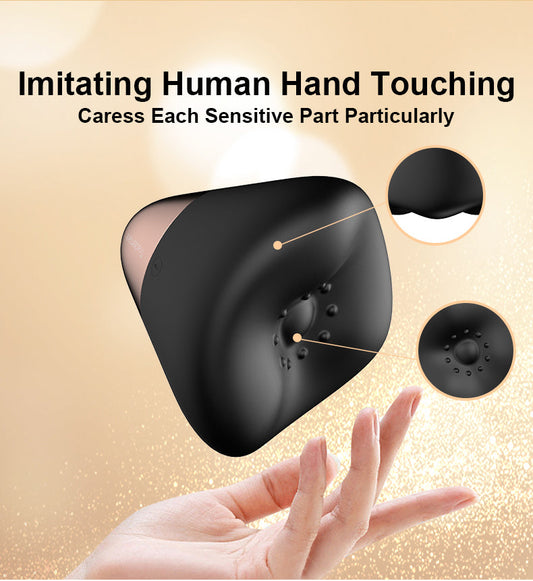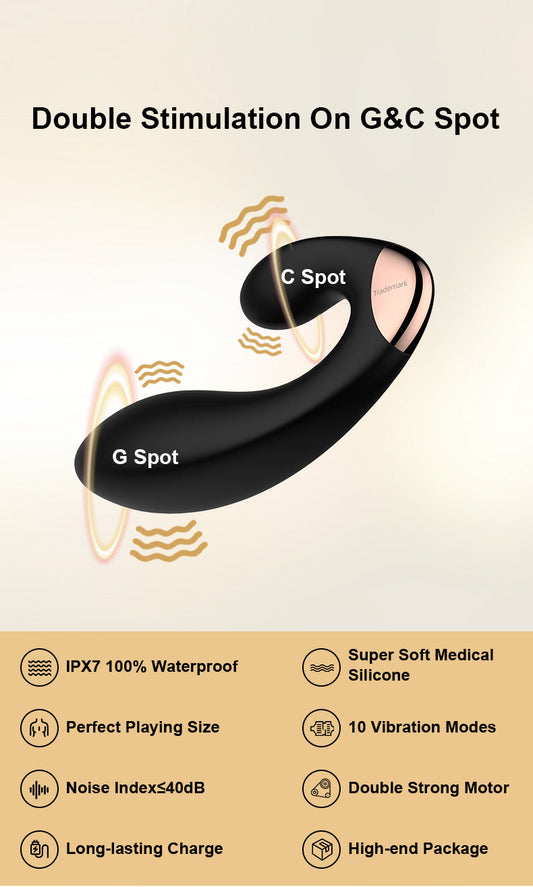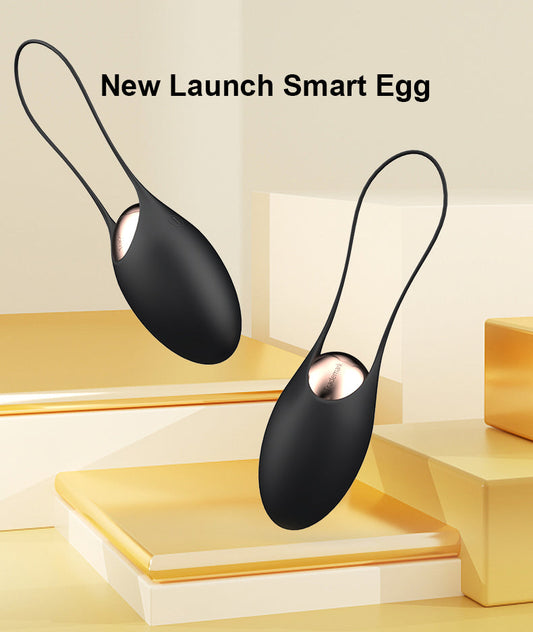
Science and Playful Ways to Boost Intimacy With Your Partner
Imagine this: it is Friday night, you and your partner are sitting on the couch, scrolling through your phones side by side. You remember the spark of your first date, the laughter, the butterflies, and now you barely even look at each other.
Sound familiar? You are not alone. Research shows that long-term couples often have less intimacy over time. This happens if they do not take action (Gottman & Levenson, 2000).
Intimacy is not a single moment. A continuous, evolving connection encompasses emotional, physical, and sexual dimensions. It thrives on communication, touch, shared experiences, playful exploration, and yes, sometimes sex toys. This article dives deep into science-backed, playful strategies to reignite and deepen your connection, keeping the spark alive.
Talk the Talk: Communication Builds Connection
Communication forms the backbone of intimacy. Couples who communicate openly about their desires, fears, and boundaries experience higher relationship satisfaction (Gottman & Levenson, 2000). Emotional disclosure allows partners to understand each other’s internal worlds, creating empathy and trust.
Practical tip: set aside 15 minutes daily for focused dialogue. Ask playful yet meaningful questions, such as “What moment today made you smile?” or “What is one fantasy you have never shared?” To keep it fun, try an “intimacy jar”: write 50 questions on slips of paper, pull one at random each night, and answer honestly.
Non-verbal cues are equally important. Eye contact, nodding, and gentle touches during conversation signal attention and care.
Integrating sex toys here can be surprisingly effective. For example, holding a small vibrator while talking about desires can remind us of our shared exploration. It can also help reduce anxiety about discussing sex.
Humor enhances communication. Share embarrassing stories or laugh about small mistakes. Studies suggest that shared laughter strengthens emotional bonds (Dunbar et al., 2012).
Touch Me Gently: Physical Affection and Oxytocin
Physical touch releases oxytocin, known as the “love hormone,” which reduces stress, fosters trust, and enhances bonding (Carter, 1998). Simple acts such as holding hands, hugging, and spontaneous kisses stimulate oxytocin production and increase relationship satisfaction.
Step-by-step routine for playful touch:
- Begin with a 5-minute hand-holding session on the couch.
- Gradually move to a gentle massage of shoulders or back.
- Integrate light teasing with feather-like touches or small vibrators for novel sensations.
- Use massage oils or body-safe silicone toys to explore pleasure zones outside typical sexual routines.
Introducing sex toys into physical touch sessions enhances intimacy by creating shared erotic experiences. Couples can use vibrators, wearable toys, or small clitoral stimulators.
These can help them enjoy pleasure together. They also improve communication about desires. Plus, they can break the routine of traditional activities.

The egg shaped vibrator is proof that small toys can bring explosive satisfaction. Its smooth oval shape fits perfectly in your hand, but once it touches your body, the strong vibrations reveal its real power. Whether you want a gentle tease or intense pulsations, this toy adapts to your rhythm.
Play Like Lovers: Games and Novel Experiences
Novelty stimulates dopamine, a neurotransmitter associated with pleasure and reward, strengthening emotional connection (Aron et al., 2000). Engaging in playful activities enhances intimacy by providing new shared experiences and excitement.
Practical approaches:
- Board or Card Games: Choose games that require collaboration or reveal personal truths. Gottman Card Decks provides prompts designed to deepen intimacy.
- Roleplay Scenarios: Act out fantasy scenarios with playful costumes or dialogue.
- Sex Toy Integration: Use blindfolds or interactive couples’ toys to explore new sensations. For instance, you can wear a vibrating ring during playful challenges, combining novelty, pleasure, and humor.
A humorous approach keeps tension low. Imagine a feather is a "tickle monster." See who can make the other laugh the most with silly dances. Make sure to keep it safe and fun for everyone.

The Gimme Sex Black Wand Vibrator is not just a toy, it is a statement of elegance and power. This black wand vibrator combines deep, rumbly vibrations with a chic black-and-gold finish that feels both modern and timeless. Imagine holding a toy that looks like a luxury accessory and feels like pure indulgence. Learn the secrets of how to squirting
Be Vulnerable: Sharing Desires and Fears
Vulnerability is the cornerstone of deep intimacy. Attachment theory highlights that secure emotional disclosure fosters closeness, whereas avoidance or anxiety inhibits connection (Mikulincer & Shaver, 2007).
Practical exercises:
- Fear Sharing: Each partner lists three fears and explains why. Practice active listening.
- Erotic Bucket List: Write down fantasies or sexual desires. Share selectively, starting with light fantasies.
Humor can ease vulnerability. Admitting you still sleep with a plush toy or giggling while describing an erotic fantasy can reduce tension. Sex toys serve as tools to safely explore fantasies together. Couples’ massagers or vibrators allow partners to experiment without pressure, creating shared positive experiences.
Foreplay Beyond the Bedroom
Foreplay does not start at the bedroom door. Texting, flirtatious notes, or sending playful emojis primes arousal and excitement. Dopamine increases anticipation and strengthens the emotional bond (Fisher et al., 2006).
Tips:
- Send a playful message describing a shared memory.
- Leave a small vibrator or mini toy with a humorous note for unexpected use.
- Tease each other with light touch or whisper fantasies during daily routines.
These acts encourage ongoing sexual communication and reinforce emotional intimacy without requiring full sexual activity.
Rituals and Routine: Consistency Builds Trust
Shared rituals signal reliability and strengthen connection. Even small gestures like morning coffee together, nightly cuddles, or weekly date nights cultivate stability and bonding.
Sex toy integration: dedicate one night per week for erotic exploration, using vibrators, massage wands, or interactive toys. Routine, combined with novelty during play sessions, maximizes bonding.

The cock ring vibrators are not just about lasting longer. They are about giving you and your partner a deeper, more connected experience. The Gimme Sex Dick Ring wraps snugly around the base, enhancing stamina and keeping you hard, while its strong motor sends thrilling vibrations that your partner can feel with every move.
Embrace the Weird: Humor, Playfulness, and Intimacy
Shared laughter releases endorphins and fosters closeness (Dunbar et al., 2012). Embrace quirks, inside jokes, and playful challenges.
- Dance-offs in the living room
- Silly roleplay scenarios
- Using novelty sex toys as part of playful dares
Humor reduces relational stress, making sexual and emotional exploration safer and more enjoyable.
Post-Play Connection: Afterglow and Emotional Reinforcement
After orgasm, oxytocin and prolactin levels rise, reinforcing bonding and reducing stress (Carmichael et al., 1987). Post-play activities enhance this effect:
- Cuddling or spooning while sharing thoughts
- Gentle massage using vibrators or soothing wands
- Engaging in pillow talk or laughter
Sex toys can extend afterglow pleasure, keeping both partners connected while exploring sensory experiences gently and consensually.
Conclusion
Intimacy is an ongoing journey requiring creativity, communication, play, and shared vulnerability. Incorporating sex toys, humor, rituals, and novelty enhances emotional, physical, and sexual bonds.
The science is clear. Couples who communicate openly have stronger and happier relationships. They also have fun together, explore fantasies, and stay connected. Commit to the practice, embrace vulnerability, and never underestimate the power of playful experimentation.
References
- Aron, A., Norman, C., Aron, E. N., McKenna, C., & Heyman, R. E. (2000). Couples' shared participation in novel and arousing activities and experienced relationship quality. Journal of Personality and Social Psychology, 78(2), 273–284.
- Carter, C. S. (1998). Neuroendocrine perspectives on social attachment and love. Psychoneuroendocrinology, 23(8), 779–818.
- Dunbar, R. I., Baron, R., Frangou, A., Pearce, E., van Leeuwen, E. J., Stow, J., ... & van Vugt, M. (2012). Social laughter is correlated with an elevated pain threshold. Proceedings of the Royal Society B: Biological Sciences, 279(1731), 1161–1167.
- Fisher, H., Aron, A., & Brown, L. L. (2006). Romantic love: An fMRI study of a neural mechanism for mate choice. The Journal of Comparative Neurology, 493(1), 58–62.
- Gottman, J. M., & Levenson, R. W. (2000). The timing of divorce: Predicting when a couple will divorce over a 14-year period. Journal of Marriage and Family, 62(3),











